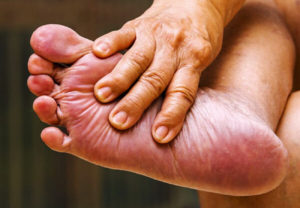High-density lipoprotein (HDL) and Low-density lipoprotein (LDL) are the two main types of Cholesterol. Scientists measure its levels in milligrams per deciliter (mg/dL) of blood.
Surprisingly, heart disease is the leading cause of death for both men and women. Not to mention, more than half of the deaths due to heart disease in 2015 were in men. And that’s where our body cholesterol kicks in.
According to the cdc.gov blog, coronary heart disease is the most common type of heart disease. Notably, killing about 366,000 people in 2015 alone. Here is what to know about coronary heart disease in detail.
What Is Cholesterol?
Cholesterol is a waxy, fat-like substance that’s found in all the cells in your body. Your body needs some of it to make hormones, vitamin D, and substances that help you digest foods.
Certain health conditions, your lifestyle, and your family history can raise your risk for high cholesterol. These are called “risk factors.” You can’t control some of these risk factors, such as your age or your family history.
But, you can take steps to lower your risk by changing things you can control. As an example, high blood pressure, high LDL cholesterol, and smoking are key heart disease risk factors for heart disease.
On the other hand, several other medical conditions and lifestyle choices can also put people at a higher risk for heart disease.
The main contributing risk factors include;
- Diabetes
- Overweight and obesity
- Poor diet
- Physical inactivity
- Excessive alcohol use
How Are LDL And HDL Levels Different?
Cholesterol travels through the blood on proteins called “lipoproteins.” Two types of lipoproteins carry cholesterol throughout the body:
- LDL (low-density lipoprotein), sometimes called “bad” cholesterol, makes up most of your body’s cholesterol. High levels of LDL cholesterol raise your risk for heart disease and stroke.
- HDL (high-density lipoprotein), or “good” cholesterol, absorbs cholesterol and carries it back to the liver. The liver then flushes it from the body. High levels of HDL cholesterol can lower your risk of heart disease and stroke.
What Does HDL Do?
HDL takes cholesterol from the cells in the body to the liver. The liver breaks it down or passes it out of the body as a waste product. This function is useful to the body, so HDL is sometimes called “good cholesterol.”
What Does LDL Do?
LDL takes cholesterol from the liver to the cells. Although cells use it, too much can build up in the arteries. This buildup in the arteries can cause health problems so that doctors sometimes refer to LDL as “bad cholesterol.”
How Do You Lower LDL And HDL Risks?
When your body has too much LDL cholesterol, the LDL can build up on the walls of your blood vessels. This buildup is called “plaque.”
As your blood vessels build up plaque over time, the insides of the vessels narrow. This narrowing blocks blood flow to and from your heart and other organs.
When blood flow to the heart is blocked, it can cause angina (chest pain) or a heart attack.
- If you have high LDL levels, your health care team may recommend cholesterol-lowering medicine and lifestyle changes to lower your risk for heart disease and stroke.
- If you have low HDL levels, talk to your doctor about lifestyle changes that may help raise your levels.
How Do You Manage Your Cholesterol Levels?
No matter your age, you can take steps each day to keep your cholesterol levels in a healthy range.
You can help prevent and manage high and risk factors by making healthy choices. And also, by managing any health conditions you may have.
In general, the Centers for Disease Control and Prevention (CDC) Trusted Source suggest the following as healthy levels of cholesterol:
- LDL should be less than 100 mg/dL
- HDL should be 40 mg/dL or higher
Consider the following prevention and management factors;
Preventing High Levels
By living a healthy lifestyle, you can help keep your levels in a healthy range and lower your risk of heart disease and stroke.
1. Consider Healthy Eating Habits
Your body makes all of the cholesterol it needs, so you do not need to obtain cholesterol through foods.
Eating lots of foods high in saturated fat and trans fat may contribute to high levels and related conditions, such as heart disease.
What you can do:
- Limit foods high in saturated fat. Saturated fats come from animal products (such as cheese, fatty meats, and dairy desserts) and tropical oils (such as palm oil). Foods that are higher in saturated fat may be high in cholesterol.
- Choose foods that are low in saturated fat, trans fat, sodium (salt), and added sugars. These foods include lean meats; seafood; fat-free or low-fat milk, cheese, and yogurt; whole grains; and fruits and vegetables.
- Eat foods naturally high in fiber, such as oatmeal and beans (black, pinto, kidney, lima, and others) and unsaturated fats, which can be found in avocado, vegetable oils like olive oil, and nuts). These foods may help prevent and manage high levels of low-density lipoprotein (LDL, or “bad”) cholesterol and triglycerides while increasing high-density lipoprotein (HDL, or “good”) cholesterol levels.
2. Maintain Healthily Weight
As can be seen, overweight and obesity raise levels of LDL (“bad”) cholesterol.
Generally, excess body fat affects how your body uses cholesterol. And eventually, slows down your body’s ability to remove LDL cholesterol from your blood.
Then again, the combination raises your risk of heart disease and stroke.
What you can do:
- To determine whether your weight is in a healthy range, doctors often calculate your body mass index(BMI). If you know your weight and height, you can calculate your BMI at CDC’s Assessing Your Weight website. Doctors sometimes also use waist and hip measurements to measure excess body fat.
- Talk to your doctor about what a healthy weight is for you.
- Work with your doctor on a food and fitness plan to help you reach or maintain a healthy weight.
3. Regular Physical Exercises
Physical activity can help you maintain a healthy weight and lower your blood pressure levels.
What you can do:
- Get active as a family. For adults, the Surgeon General recommends 2 hours and 30 minutes of moderate-intensity exercise, such as brisk walking or bicycling, every week. Children and adolescents should get 1 hour of physical activity every day.
- Make physical activity a part of each day. Take the stairs instead of the elevator, park a little farther away, walk to the store, or do jumping jacks during commercials.
4. Quit Smoking and Limit Alcohol
Smoking damages your blood vessels speed up the hardening of the arteries and greatly increases your risk for heart disease. If you don’t smoke, don’t start. If you do smoke, quitting will lower your risk of heart disease.
Too much alcohol can raise cholesterol levels and the levels of triglycerides, a type of fat in the blood.
What you can do:
- Talk to your doctor about ways to help you quit smoking.
- Avoid drinking too much alcohol. Men should have no more than two drinks per day, and women should have no more than one.
Managing High Levels
You may need to have your cholesterol levels checked at least once every 4 to 6 years if you do not have heart disease. Some people need to get their cholesterol checked more often or less often.
But, if you are concerned about your cholesterol, talk to your health care team about steps you can take to manage your cholesterol. Talk with your health care team about the timeline that is best for you.
Below are more factors you should consider:
1. Medication Identification Directions
If you take medicine to treat high low-density lipoprotein (LDL) cholesterol, heart disease, stroke, or diabetes, follow your health care team’s instructions carefully.
Always ask questions if you don’t understand something. Never stop taking your medicine without first talking to your doctor, nurse, or pharmacist.
2. Effective Lifestyle Changes
You can take steps to lower your high LDL cholesterol levels by making healthy changes to your lifestyle, such as choosing foods lower in saturated and trans fats and maintaining a healthy weight.
You and your health care team can work together to prevent or treat diabetes and ensure that it doesn’t lead to high LDL cholesterol. Discuss your treatment plan regularly, and bring a list of questions to your appointments.
Is There Medicine For Lowering Cholesterol?
Of course, Yes! For instance, if you have high low-density lipoprotein (LDL) cholesterol, your health care provider may prescribe medication. In addition to lifestyle changes to control your LDL cholesterol level.
As a matter of fact, several types of medicines help lower LDL cholesterol. The chart below describes each type and how it works. Click on the image for source page redirection;
Always remember, all drugs may have side effects, so talk with your health care team, including your pharmacist, on a regular basis.
All in all, once your cholesterol levels have improved, your health care team will monitor them. In the end, ensuring that they stay in a healthy range.
READ MORE: Heart Disease Fact Sheet
Who Needs Cholesterol-Lowering Medicine?
Firstly, your treatment plan for high cholesterol will depend on your current cholesterol levels and your risk of heart disease and stroke. Your risk for heart disease and stroke depends on other risk factors.
Including high blood pressure and high blood pressure treatment, smoking status, age, high-density lipoprotein cholesterol level, total cholesterol level, diabetes, family history, and whether you have already had a heart attack or stroke.
Your health care provider may prescribe medicine if you;
- have already had a heart attack or stroke, or you have peripheral arterial disease.
- Your LDL cholesterol level is 190 mg/dL or higher.
- are 40–75 years old with diabetes and an LDL cholesterol level of 70 mg/dL or higher.
- You are 40–75 years old with a high risk of developing heart disease or stroke and an LDL cholesterol level of 70 mg/dL or higher.
Secondly, talk with your health care team about how you can lower your risk for heart disease.
Summing Up,
Important to realize, when you’re on a high-carb diet, you get most of your energy from glucose. As an example, you eat carbs, digest them into glucose, and send glucose through your bloodstream to hungry cells, with a little direction from insulin. And in fact, your blood is mostly water, and glucose dissolves into it with no problem (imagine stirring sugar into a glass of water).
By the same token, when you’re on a high-fat diet, you get most of your energy from fat. The process starts off similarly to the way carbohydrate metabolism does: you eat fat and digest it into fatty acids. But, you can’t send fatty acids right into your bloodstream because fats and liquids don’t mix.
Simply put, the fat would separate out and wouldn’t go anywhere (imagine stirring the oil into a glass of water). Moreover, fats are still a great and efficient source of fuel. Therefore, your body simply has to be a little more clever in delivering them.
I hope the above-revised guidelines matched resources to your health needs — especially, at every liver cholesterol concern level. With this in mind, follow more leads through our Blog. But, if you’ll have more questions, contributions, thoughts or even additional information you’d like to share with our Subscribers as a Guest Author, please Contact Us. Below are more useful and related topics:









